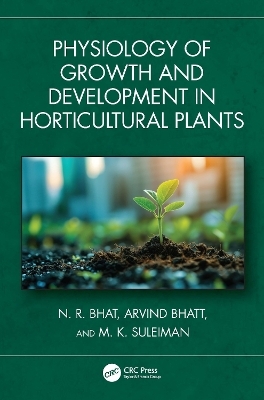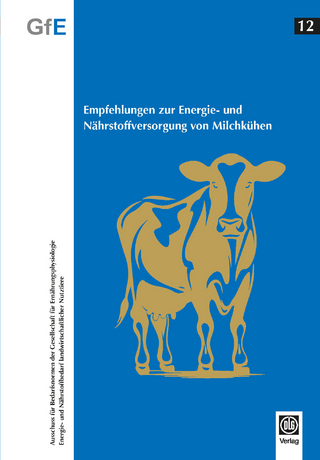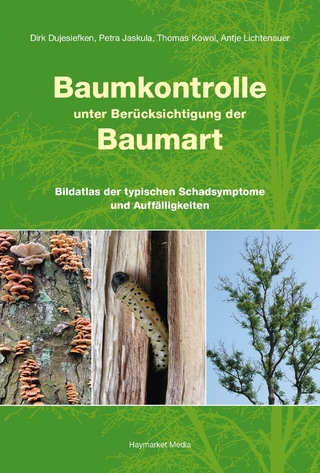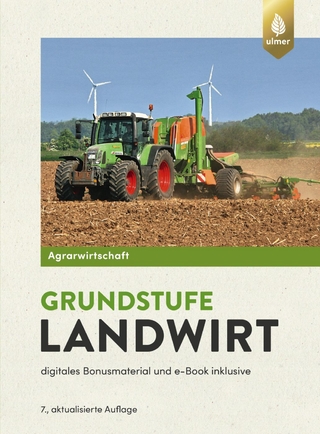
Physiology of Growth and Development in Horticultural Plants
CRC Press (Verlag)
978-1-032-42958-8 (ISBN)
Physiology of Growth and Development in Horticultural Plants contains 22 chapters organized into six sections, beginning with an introduction on basic concepts of plant growth and development; followed by genetic basis of plant development; quantification of growth; and sensing and response of plants to various environmental signals. It also explores plant growth hormones and their role either singly or in combination in controlling various aspects of plant growth and development, and hormonal regulation of physiological and developmental processes. The book highlights intricate aspects of growth and development in horticultural plants with classic examples from the real world.
Features
· Presents information on plant growth and development; structure and genetic basis of plant development with quantification of growth; sensing and response of plants to various environmental signals; and various phytohormones and their role in controlling aspects of plant growth and development.
· Provides key scientific and technical advances, issues, and challenges in various areas of growth and development of horticultural plants.
· Demonstrates how the response of various plants to internal and external stimuli can be commercially exploited.
Physiology of Growth and Development in Horticultural Plants encourages the development of new techniques, technologies and innovative practices, and is an ideal reference for students of advanced plant sciences courses, researchers, and commercial horticultural practitioners.
Narayana Bhat received his Ph. D. degree in Horticulture from The Ohio State University in Columbus, Ohio (USA) in 1982 and was a postdoctoral fellow from July 1982 to January 1983 at Paul Ecke Poinsettias in California, USA and from December 1988 to March 1990 at The Ohio State University in Columbus, Ohio (USA). Dr. Bhat has worked in several universities and research organizations including Kuwait Institute for Scientific Research (KISR), The Ohio State University, Indo American Hybrid Seeds, Mahatma Phule Agricultural University, Himachal University and Punjab Agricultural University. His research focused on precision agriculture, greenhouse crop production; soilless growing systems; irrigation water and nutrient management; and characterization, documentation, mass propagation and ecophysiology of Kuwait’s native plants and, ecological restoration of degraded ecosystems. During his 27-year tenure at KISR, he was the project leader/ activity leader/ principal investigator of over 55 research projects and mentored several staff members. He also taught in-house and on-the-job training courses, and, undergraduate and graduate courses in horticulture. He also chaired the Advisory Committee of seven graduate students and served on several important committees. He has published seventeen books/ book chapters, over 115 peer-reviewed research papers, 170 reports and scientific publications and presented 69 papers in regional and international conferences Arvind Bhatt is a Research Scientist affiliated with the Desert Agriculture and Ecosystems Program at the Environment and Life Sciences Research Center of the Kuwait Institute for Scientific Research. Dr. Bhatt completed his PhD Degrees in 2006 from H.N.B. Garhwal University, Uttarakhand, India. With over 17 years of global experience in plant science, he has collaborated with esteemed institutions and universities worldwide, including UKZN in South Africa, Universiti Sains Malaysia, Ghent University in Belgium, Gulf Organization for Research and Development in Qatar, Lushan Botanical Garden in China, and the Kuwait Institute for Scientific Research. Dr. Bhatt scholarly contributions are proved by more than 135 peer-reviewed research publications, which have amassed over 2800 citations. His remarkable achievements extend to receiving numerous awards and securing research grants from diverse countries. Majda Khalil Suleiman is working as Research Scientist and Manager of Desert Agriculture and Ecosystems Program at the Kuwait Institute for Scientific Research. She completed her PhD. Degreed in Biological Sciences (Thesis- Restoration Ecology of Acacia pachyceras in the State of Kuwait) from the University of Western Australia. She was part of the team in national projects such as introducing mangroves for protection and enrichment of Kuwait’s coastlines and development of Kuwait Greenery Master Plan and Urban Demonstration Garden. Ms. Suleiman led many research projects and authored several research papers in refereed international journal (60), Proceedings/Abstract Books/Posters/Presentations (62), books (8) and KISR reports (141). Her main areas of research are desert landscaping, rehabilitation, re-vegetation, biodiversity conservation, introduction and mass propagation of ornamental plants suitable for Kuwait’s harsh conditions and their use in landscaping, standardization of propagation techniques for native plants of Kuwait for their utilization in greenery projects. Ms. Suleiman is also involved in KERP (Kuwait Environmental Remediation Program) as a coordinator and as resource coordinator for ELSRC staff members. She is a member of several national and international committees in research and development category.
Section I
Introduction – Definitions, Basic Concepts and Components of Growth and Development
1. Overview of plant structure and development.
2. Embryogenesis and early development of horticultural plants.
3. Structure of protoplast, cell division and cell growth in horticultural plants.
4. Meristems, differentiation and dedifferentiation.
5. Vascular cambium, xylem and phloem, their role in growth and development of horticultural plants.
6. Reproduction in horticultural plants.
Section II Genetic Aspects of Plant Growth and Development
7 Plant genome and regulation of gene expression.
Section III Quantitative Aspects and Environmental Regulation of Growth and Development
8. Growth stages, growth curves and growth analysis in horticultural plants.
9. Modelling of Horticultural Crops
Section IV Response of Plants to Environmental Stimuli
10. Photoperception and signaling of tropic and nontropic responses environment signals
11. Vernalization of horticultural plants.
12. Training and pruning, source-sink relationships and bud dormancy its causes and breaking methods.
Section V Hormonal Regulation of Plant Growth and Development
13. Auxins – Basic functions, biosynthesis, their role in growth and development of horticultural plants.
14. Gibberellins - Basic functions, biosynthesis, their role in growth and development of horticultural plants.
15. Cytokinins - Basic functions, biosynthesis, their role in growth and development of horticultural plants.
16. Abscisic acid - Basic functions, biosynthesis, their role in growth and development of horticultural plants
17. Ethylene - Basic functions, biosynthesis, their role in growth and development of horticultural plants
18. Brassinosteroids - Basic functions, biosynthesis, their role in growth and development of horticultural plants
19. Jasmonates and other bioregulators - Basic functions, biosynthesis, their role in growth and development of horticultural plants
Section VI Hormonal Regulation of Physiological and Developmental Processes
20. Hormonal regulation of physiological and developmental processes in horticultural plants
21. Hormonal regulation of fruit setting, fruit development, fruit drop and fruit ripening
22. Hormonal regulation of senescence and abscission.
Glossary of Terms
| Erscheinungsdatum | 30.08.2024 |
|---|---|
| Zusatzinfo | 12 Tables, black and white; 39 Halftones, black and white; 39 Illustrations, black and white |
| Verlagsort | London |
| Sprache | englisch |
| Maße | 178 x 254 mm |
| Gewicht | 821 g |
| Themenwelt | Weitere Fachgebiete ► Land- / Forstwirtschaft / Fischerei |
| ISBN-10 | 1-032-42958-5 / 1032429585 |
| ISBN-13 | 978-1-032-42958-8 / 9781032429588 |
| Zustand | Neuware |
| Informationen gemäß Produktsicherheitsverordnung (GPSR) | |
| Haben Sie eine Frage zum Produkt? |
aus dem Bereich


